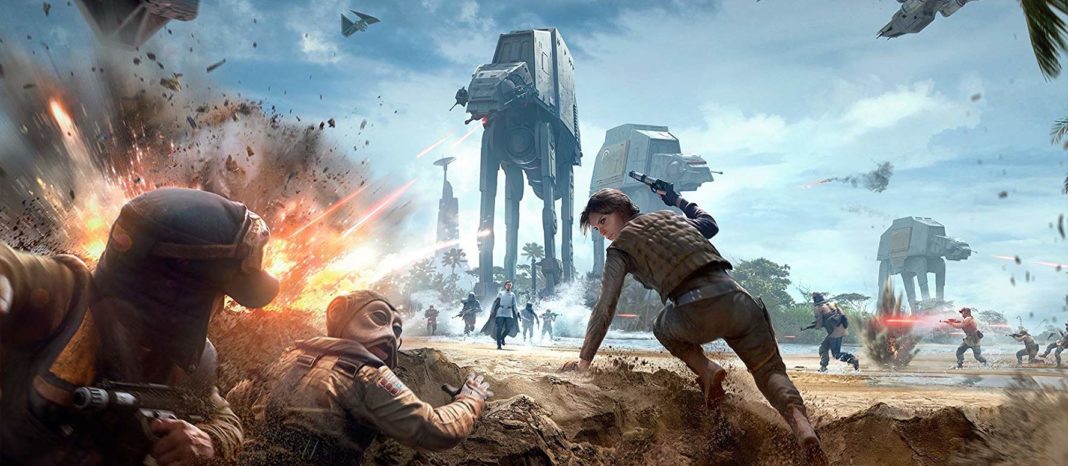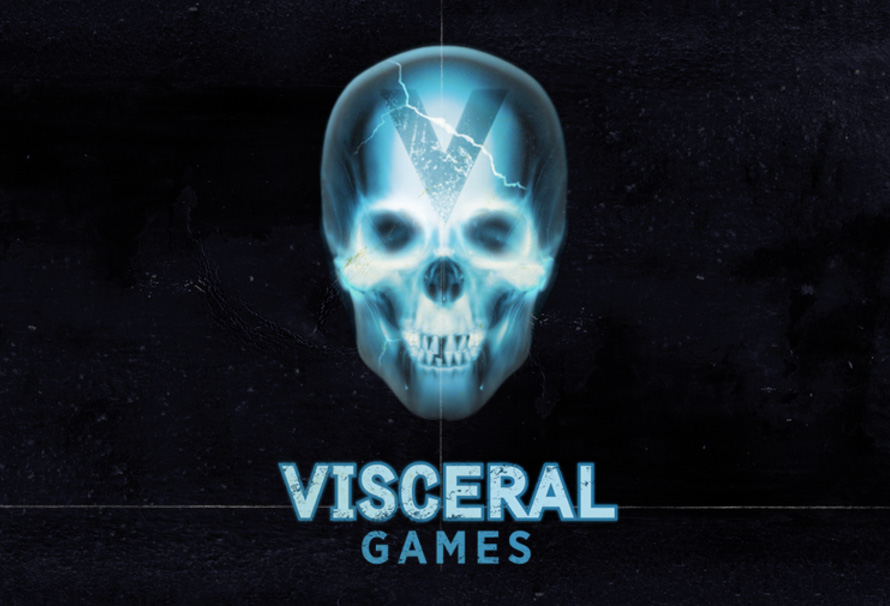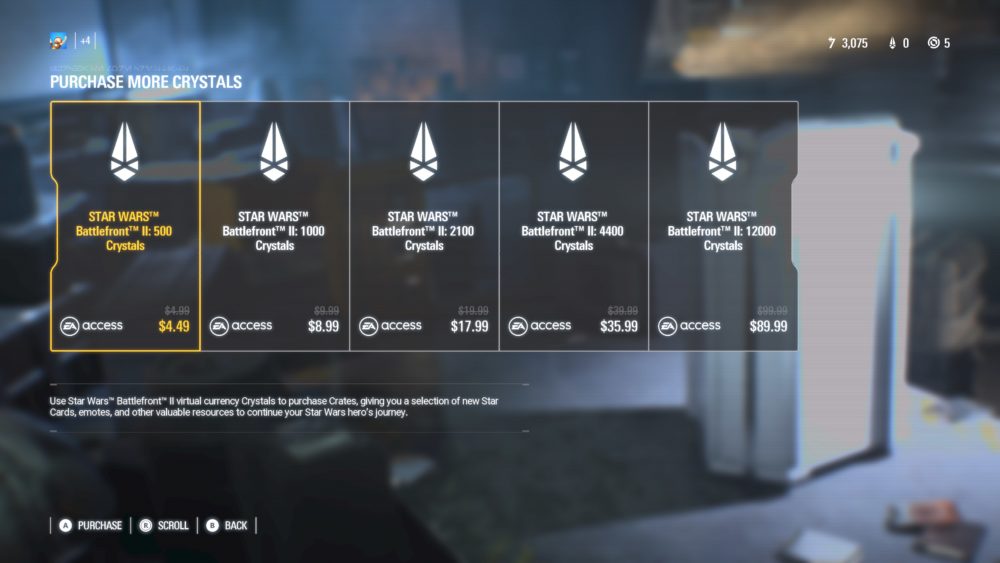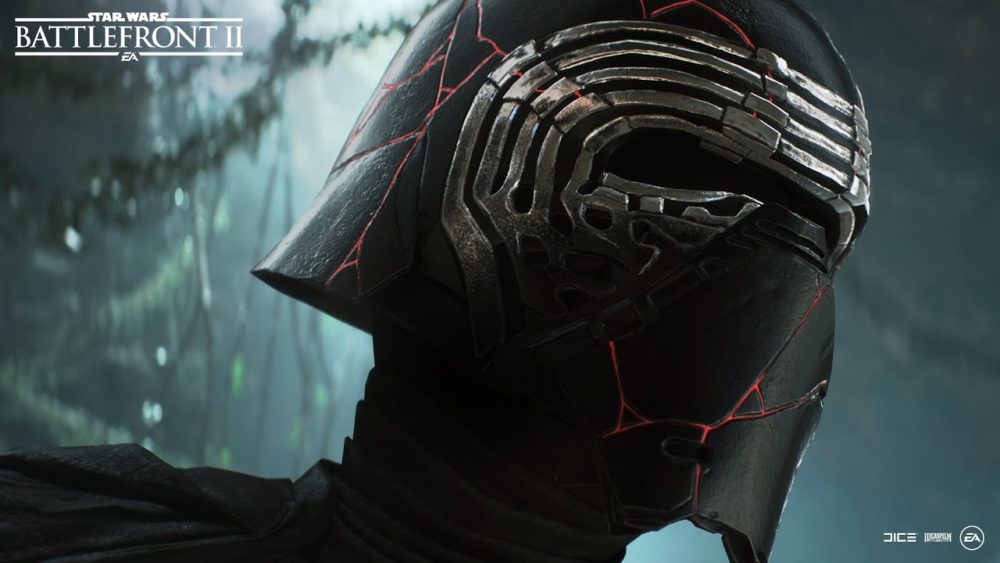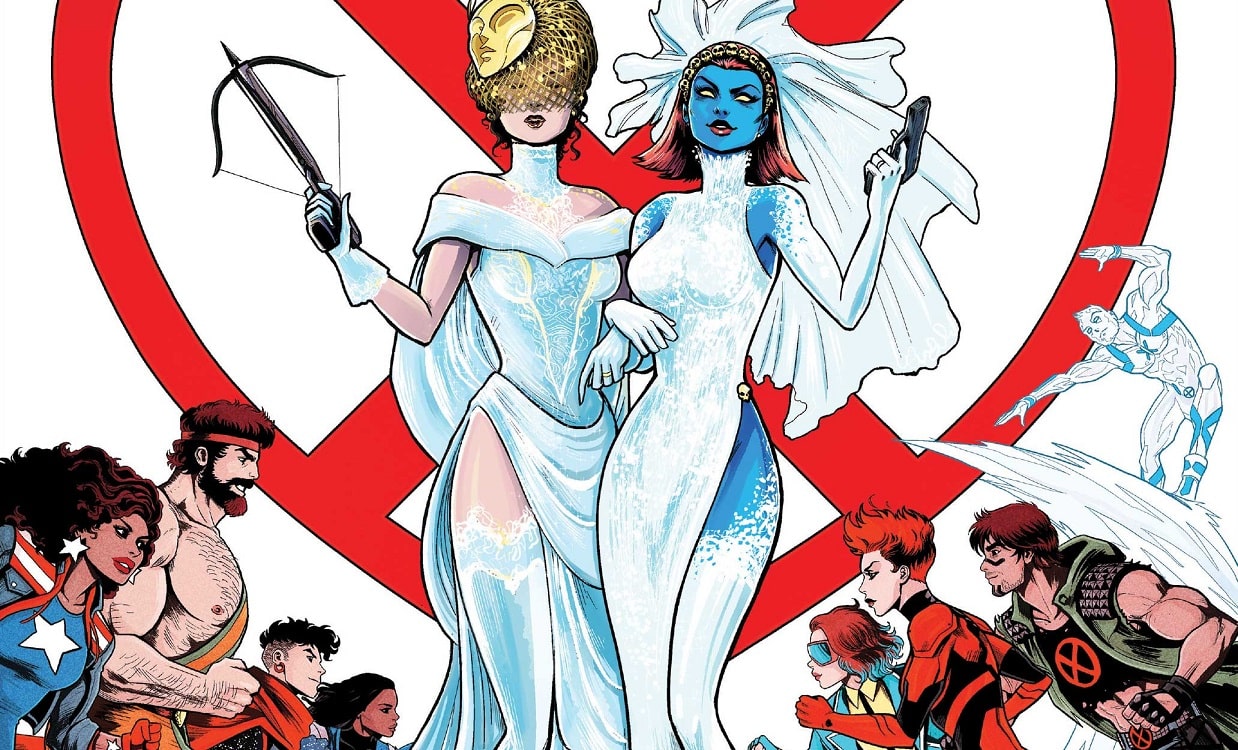Only months buying LucasFilm, Disney announced a deal granting Electronic Arts (EA) a 10-year license to publish Star Wars games. Video game enthusiasts were understandably skeptical since the news was reported in 2013, the second year in a row EA was voted the Worst Company in America.
EA lived up to that title with the release of Star Wars Battlefront 2, which received one of the most widespread backlashes in the history of video games. But the publisher has recently made amends for its mistakes, most notably with recent release Jedi: Fallen Order, in hopes of retaining the license and to protect its larger business interests. Read the roller coaster ride that has been EA’s past six years of Star Wars.
A solid start
EA’s first use of the license was with 2015’s Star Wars Battlefront developed by DICE, the Swedish video game developer behind the similarly named Battlefield series. The shooter puts you inside the original trilogy in a way nothing else had before. With the aid of EA’s proprietary Frostbite engine, DICE produced the most advanced graphics and sound design ever implemented in a Star Wars game.
Star Wars Battlefront places you at famous locations from the films as a Stormtrooper, Rebel, or one of the trilogy’s main characters. The game wasn’t universally praised but it was received well enough to leave fans intrigued to see where EA would go from there. Unfortunately, the Star Wars fanbase grew increasingly less enthused about EA’s handling of the property in the years that followed.
Project Ragtag scrapped
After Amy Henig was reportedly ousted from Naughty Dog, the creative director of the Uncharted series joined Visceral Games to tackle EA’s first single-player Star Wars title. Just as the Uncharted series channeled the Indiana Jones films, Ragtag was inspired by another Harrison Ford character. The game was to follow Han Solo-like smugglers as they traveled through the Star Wars universe.
Kotaku’s Jason Schrier did some stellar reporting on the collapse of Visceral Studios, revealing that, unbeknownst to most of the games industry, Ragtag was in trouble long before the studio’s closure. Some of that, such as studio infighting and unrealistic ambitions, can’t be directed attributed to EA. But several of the biggest pitfalls in Ragtag’s development lay are due to restrictions Electronic Arts put on the studio.
One of the biggest challenges Visceral faced was using Frostbite, EA’s aforementioned in-house engine, to make the game. Frostbite is a fantastic option for shooters like Star Wars Battlefront and sports titles including EA’s biggest breadwinners, Madden and FIFA. For pretty much every other genre, Frostbite is a recipe for disaster. Its scope is extremely limited compared to 3rd party engines because it’s only been used to create a handheld of titles, not put through the paces nearly as much as other options like Unreal Engine or Unity. For a genre as broad as action-adventure, the Ragtag team frequently needed to add elements to the game Frostbite was never designed to accommodate, which required months of additional development time.
The other issue was a much broader one. In recent years, Electronic Arts has stepped away from single-player experiences. As microtransactions play an increasingly significant role in its overall business model, games designed to only play through once began to make less sense for the publisher. Even though it greenlit Ragtag, Electronic Arts was never fully behind the decision. It never provided Visceral with enough resources for what it expected the studio to accomplish and ordered the team to add microtransactions to the game even though they don’t naturally fit into most single-player titles.
Even if zero issues existed inside Visceral Games, Ragtag would have always struggled to reach the finish line because it was funded by a publisher that never believed in it.
Microtransaction mayhem
EA received some of the worst blowback in its history with the release of Star Wars Battlefront 2 in 2017. Instead of keeping some of its content behind a season pass like its predecessor, EA decided to add microtransactions for players to purchase within the game in order to make money beyond the initial sale. The problem was that, in Battlefront 2, the microtransactions unlocked gear that gives its owners advantages in the multiplayer mode.
Pay-to-win microtransactions have been derided since their inception and the backlash to their inclusion in Star Wars Battlefront 2 was swift and furious within the gaming community. More alarmingly, though, was that the news reached mainstream outlets. EA found itself facing criticism on a much wider scale than it ever expected. The controversy turned predatory monetization in video games into front-page news. Games before and after Battlefront 2, especially in the mobile space, have utilized more repellant forms on monetization, but none of them represent a brand as recognizable Star Wars.
The spotlight on Electronic Arts’ less savory business models placed the company as a whole in a difficult position. The company makes billions of dollars through microtransactions across its library of titles. This fiscal year, FIFA’s Ultimate Team mode accounts for 28% of EA’s total revenue, more revenue than EA earned from sales of the FIFA games themselves. Electronic Arts posted net revenue of $4.95 billion, meaning that microtransactions from one title alone earned the company approximately $1.39 billion in 2019. The last thing EA wanted was a negative spotlight on such a huge source of revenue.
EA’s mea culpa
Recognizing what a grave situation it put itself in, Electronic Arts admitted its mistakes and pulled all of the microtransactions from Star Wars Battlefront 2. The publisher eventually added some back, but only for purely cosmetic items, which few consumers take issue with.
Over the past two years, DICE has added new Heroes, Villains, maps, and game modes to the title for no extra charge. Despite its lackluster sales, EA has remained committed to Battlefront 2, slowly building up its reputation with each new update. IGN, one of the largest gaming media outlets, just re-reviewed the game. Its score rose all the way from a 6.5 to an 8.8/10, which speaks to all the changes and improvements made since launch.
Rising tides with Fallen Order
Jedi: Fallen Order, which was released last month, best demonstrates EA’s changed practices with the Star Wars license. As The Beat writes in its analysis of the game, Fallen Order has its shares of flaws, many of which likely could have been ironed with more development time. Still, the game is a sign that EA learned from its mistakes or at least understands that it can’t repeat them.
During the development of Fallen Order, EA didn’t insist on the same restrictions it placed on Ragtag for the new action-adventure. Respawn Entertainment, the developer of Fallen Order, wasn’t forced to use Frostbite, opting instead for the much more versatile Unreal Engine. The game also wasn’t hampered with microtransactions. As a result, the game received mostly positive reviews and was free of the controversy that plagued past Star Wars titles.
Jedi: Fallen Order earned EA a much-needed PR win. For the first time in almost five years, fans again have some reason to be excited about Star Wars games in EA’s hands.
Final years with the license
Of course, EA isn’t doing any of this out of the kindness of its corporate heart. Public pressure encouraged EA to make more consumer-friendly decisions as it nears the end of its current contract to make Star Wars games. Electronic Arts is still driven by money and always will be. But, in this case, at this moment, EA’s financially-driven decisions are aligned with the interests of consumers.
Bob Iger claims to be happy to have EA making Star Wars video games. But it’s too early to say where Disney’s gaming division will be in three years and whether or not they’ll wish to continue doing business with Electronic Arts when the contract expires. For now, EA needs to continue releasing Star Wars games that don’t ignite controversy and remain happy to make heaps of money rather than boatloads. A Jedi sequel is all but a given and EA likely has at least one other Star Wars project in development. We’ll learn more as the deal nears its end. Let’s hope for more good news between now and then.


